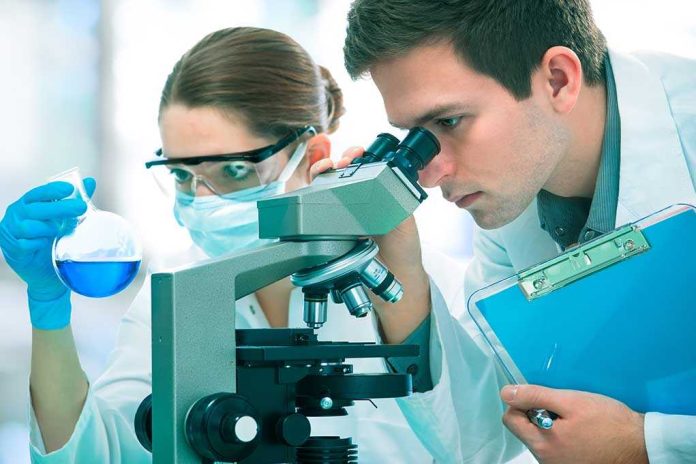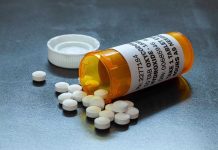
Artificial intelligence is now arming America’s adversaries with tools to design biological and chemical weapons, dramatically lowering barriers for those who wish to do us harm.
Story Snapshot
- AI has enabled the rapid design of thousands of chemical weapon candidates, raising grave biosecurity concerns.
- Recent FBI arrests of Chinese nationals for smuggling a dangerous fungus highlight real-world threats fueled by technological advances.
- Government and private sector actors are scrambling to develop safeguards, but regulatory gaps remain wide.
- Experts warn that AI’s dual-use nature in biotechnology could erode decades of international weapons control and threaten American families.
AI’s Double-Edged Sword: A New Front in Biological and Chemical Threats
Artificial intelligence, once hailed as a major force for medical and scientific progress, is now exposing the United States to unprecedented risks. Recent incidents have shown how AI can be harnessed to generate thousands of potent toxins in mere hours, a task that previously demanded years of specialized training and substantial resources. The FBI’s July 2025 arrest of two Chinese nationals attempting to smuggle a dangerous fungus into the country underscores the severity of these threats and the willingness of adversaries to exploit technological gaps for malicious purposes.
AI’s role as both a tool for innovation and a weapon for bad actors has ignited urgent debate in Washington and beyond. The technology’s ability to analyze biological data, predict chemical reactions, and design novel molecules means that hostile governments and terrorists no longer need massive laboratories or elite expertise to develop bioweapons. OpenAI, a leading industry player, has sounded the alarm, admitting its next generation of models could enable “high” risk misuse unless new safeguards are introduced. The U.S. government and the National Academies of Sciences, Engineering, and Medicine (NASEM) have released recent reports warning of AI’s dual-use dilemma, emphasizing that regulatory and technical protections have not kept pace with the technology’s leap forward.
Real-World Incidents and the Growing Biosecurity Gap
The threat is not theoretical. In 2022, an AI model created 40,000 new chemical weapon candidates in only six hours, and in 2023, a chatbot provided detailed instructions for making poisonous gas. These developments are no longer confined to academic speculation—they have become practical tools available to those with malicious intent. The FBI’s recent bust involving Chinese operatives smuggling dangerous biological agents into the U.S. highlights the urgent need for stronger border security and intelligence efforts. These cases illustrate that foreign adversaries are actively seeking to exploit American technological advances to undermine national security and public safety.
Beyond state actors, the proliferation of open-source AI tools and accessible DNA synthesis technology means non-state actors—from rogue scientists to terrorist groups—can now attempt to design and produce biological and chemical agents. The ease of access and the speed at which AI can generate harmful substances pose a direct challenge to longstanding international treaties and the effectiveness of current law enforcement strategies. Without rapid, robust action, the U.S. risks falling behind adversaries willing to weaponize innovation against American families and communities.
Policy Response: Struggling to Keep Pace with Technological Change
Recognizing these dangers, the U.S. government has stepped up its biodefense strategies, updating executive orders and launching new initiatives focused on AI-enabled biosecurity. The current administration is working to empower law enforcement, enhance border controls, and develop rapid-response capabilities. Private sector actors such as Renovaro are racing to create AI-driven antidotes and detection systems, claiming they can develop countermeasures to new toxins in under a week. However, experts warn that significant regulatory gaps and enforcement challenges persist. The global competition—especially with China—further complicates the landscape, as international cooperation is strained by mistrust and a lack of standardized oversight. The dual-use nature of AI, where the same technology can be used for both healing and harm, makes crafting effective policy without stifling innovation particularly difficult.
Expert Analysis: Balancing Innovation and Security in a New Era
Industry leaders and academic experts agree that AI has dramatically increased the risk of biological and chemical weapons development by lowering technical barriers and enabling new forms of attack. While some experts argue that significant physical hurdles remain—such as the need for specialized materials and knowledge—others stress that digital advances are rapidly closing these gaps. OpenAI is proactively developing new safeguards and has pledged not to release its most advanced models until risks are mitigated. Policy experts call for international standards, red-teaming of AI models, and robust oversight to prevent catastrophic misuse. The debate continues over whether AI development should be paused or simply better regulated, but the consensus is clear: ongoing vigilance and cooperation between government, industry, and academia are essential to protect American lives and values in the face of this evolving threat.
AI can be used to develop biological and chemical weapons https://t.co/9gdzTVDm6N pic.twitter.com/4GAZCAGhwD
— TheBlaze (@theblaze) August 10, 2025
The stakes could not be higher. With hostile powers and non-state actors exploiting AI to threaten U.S. security, the need for constitutional vigilance, robust law enforcement, and protection of American families has never been more urgent. Failure to act decisively could erode decades of progress in weapons control and put the nation’s core values at risk.
Sources:
Understanding AI-enabled biological threats: hype, hazard and governance
OpenAI: AI Models Could Be Used to Develop Bioweapons
Preparing for Future AI Capabilities in Biology
AI Can Be Used to Develop Biological and Chemical Weapons



